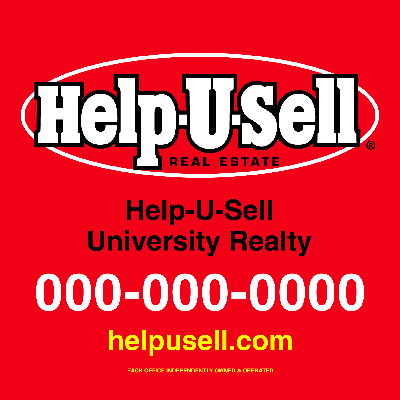You may have both, you know. An SOI and a CI that is.
SOI is ‘Sphere of Influence.’ It’s an old real estate term and means everyone who knows who you are and that you are in real estate. Some are your immediate family and best friends while some may be little more than acquaintances. The key is that they associate you, your name or face with buying and selling real estate. You cultivate your SOI in hopes that when it comes time or them to sell, they’ll think of you. Cultivation comes with newsletters, postcards, drop by visits, occasional phone calls, market updates and so on.
CI is ‘Center of Influence.’ It’s a Help-U-Sell(r) term and it is subtly different from SOI. A Center of Influence is someone who, under the right set of circumstances, might tell others about you. The concept of the CI comes from the marketing truth that word of mouth is the most powerful form of advertising. CIs help you spread the word to those who are likely to be buying or selling soon. They may not know you personally, but they understand that Help-U-Sell equals savings and are willing, even anxious to share that understanding.
Here’s the deal: in 1976, when I started selling real estate for Century 21 in suburban Atlanta, I was told it was a numbers game. I was told the more people I asked if they wanted to buy or sell, the more business I’d do. This was true. Probably still is. I was also told that I should ‘farm’ an area and ask everyone who lived within that geography if they wanted to buy or sell, regularly. Years later, the concept of farming evolved to where it was not necessarily a geographical thing. We began farming other kinds of groups of people. People with a strong connection to an ethnic group might farm that group. People who were active in a specific country club might farm that club. Others of us started farming our Sphere of Influence: contacting them on a regular basis to see if they wanted to buy or sell.
Help-U-Sell came at it from a direct marketing point of view and realized what was needed was to help people understand if they worked with Help-U-Sell they’d probably save money. We wanted people to equate Help-U-Sell with savings. When we cultivate that identity with one consumer, chances are good that next time he or she hears that a friend or neighbor is planning to sell or buy, they will suggest a conversation with Help-U-Sell.
Our advertising messages were carefully crafted to cultivate this kind of CI behavior. Postcards, Free Weekly Lists, homes magazines, newspaper ads — all were designed to make three important points:
We’re here — People use us — and It works
Look at Help-U-Sell homes magazine ads. You may see a dozen homes, but as many as half of them will be sold — and will say so. But they’ll say more: ‘Sold in 16 days, Seller saved $4,325’. Or ‘Sold in 8 days, Seller saved $5,676.’ We showcase ‘sold and saved’ as much as ‘For Sale’ because doing so powerfully delivers the three key messages: We’re here, people use us and It works.
Keep looking at that Help-U-Sell ad. There’s another distinguishing characteristic there, maybe off to the side: the Testimonial. Our clients are usually delighted the day they list with us and even happier the day they close. Getting a concise testimonial to use in marketing is easy under these circumstances and using the testimonial in advertising powerfully hammers home the message: We’re here, people use us and it works.
Testimonials, Sold and Saved, and the tag line: Full Service – Big Savings all work to ingrain a Help-U-Sell identity into the consumers’ mind. Anyone who gets the message that we might save them some money in commissions is likely to call just to find out what we do — and that accounts for a large part of the numerous leads the typical Help-U-Sell office receives every month.
So, really: whats the difference between SOI and CI? Nothing much. It’s mostly in your approach. If you’re running around like a chicken with its head cut off screeching ‘Wanna Buy?!? Wanna Sell?!?’ you probably have an SOI. But if you’re gently getting the message that you are different in a way that benefits buyers and sellers into the minds of people — you probably have a CI. And I think that’s better. Eventually your SOI gets tired of you always asking the same questions. They may just joke about it or they might stop taking your call. The CI on the other hand, gets your message and disseminates it for you. The CI is self perpetuating.
And oh, by the way: unless you have a business proposition that is different and also beneficial to the consumer chances of ever getting anyone to spread the word for you are pretty slim.

 Why? The obvious answer is that we all discovered, somewhere in the late ’90s, that buyers were important to our business. Today the broker wants those calls. He wants to show the property so that he has an opportunity to build rapport with the buyer prospect and perhaps get an appointment for a full Buyer Consultation. In addition, the phrase ‘For Sale with Owner’ implied a limited service or discount offering and Help-U-Sell practitioners are adamant: we are not discounters!
Why? The obvious answer is that we all discovered, somewhere in the late ’90s, that buyers were important to our business. Today the broker wants those calls. He wants to show the property so that he has an opportunity to build rapport with the buyer prospect and perhaps get an appointment for a full Buyer Consultation. In addition, the phrase ‘For Sale with Owner’ implied a limited service or discount offering and Help-U-Sell practitioners are adamant: we are not discounters!